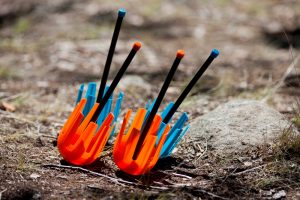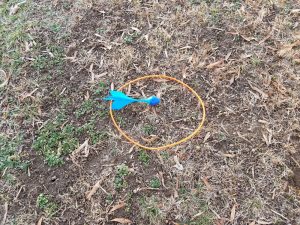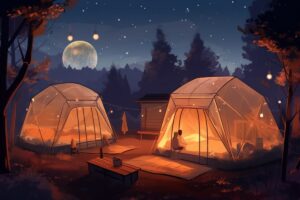The surprise, color, and drama of fireworks make a display worthy of special occasions like the 4th of July.
Letting off some fireworks is a great way to enjoy your garden in the evenings hours with food, family, and friends.
If you’ve had enough of trekking to a crowded park for firework displays, you’ll appreciate the convenience and fun of a smaller display in your backyard.
But if your backyard is small, you may wonder if you can set off fireworks safely.
What to Expect? Read on for a simple guide to fireworks for a small backyard including all the relevant safety info and examples of types of fireworks that are suitable for a small garden space.
Fireworks in a small garden can be risky
With all the color and light, it’s easy to forget that fireworks are explosive devices.
Being cautious about letting them off in a small garden is wise as they can cause damage and serious harm if things go wrong.
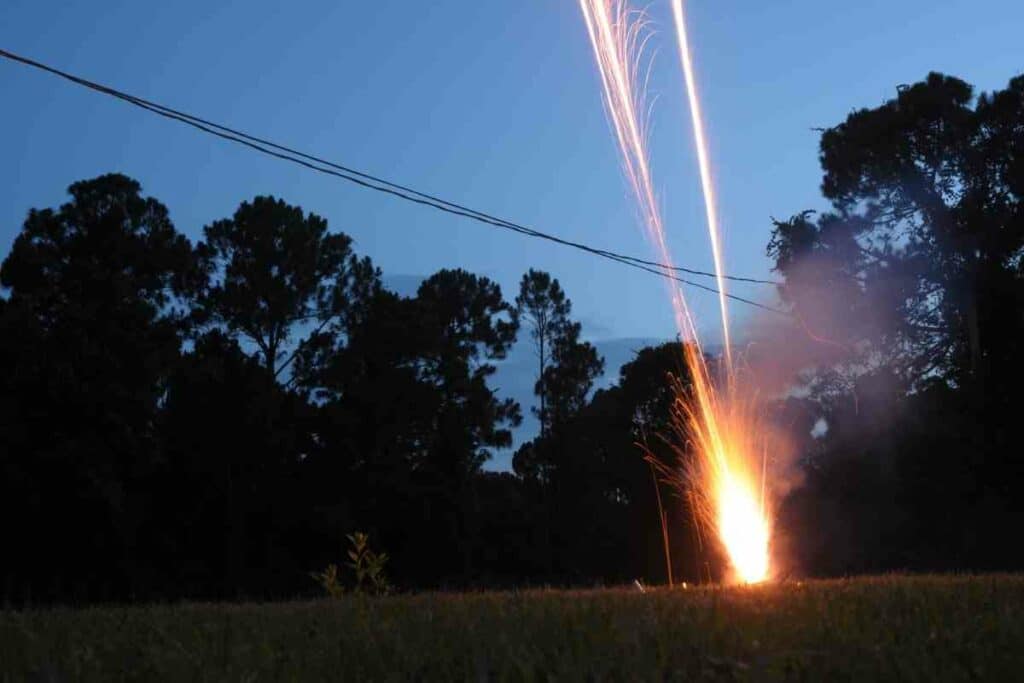
Here are some hazards of setting off fireworks in a backyard that is too small.
Injury
If a powerful firework discharges too close to spectators, they are at risk of coming into contact with the sparks or the full force of the explosion.
Firework injuries are some of the nastiest around, ranging from minor burns to more extensive burns, ballistic injuries, and even blindness.
And this is not a rare problem with just under 16,000 people hospitalized with firework injuries in the US in 2020.
Fire
Without adequate clearance, the flames and sparks from fireworks may end up landing on and even igniting property.
According to the National Fire Protection Association, fireworks started 19,500 fires including fatalities and over $100 million in property damage.
Nuisance
In a densely populated area, letting off fireworks may cause a disturbance to neighbors.
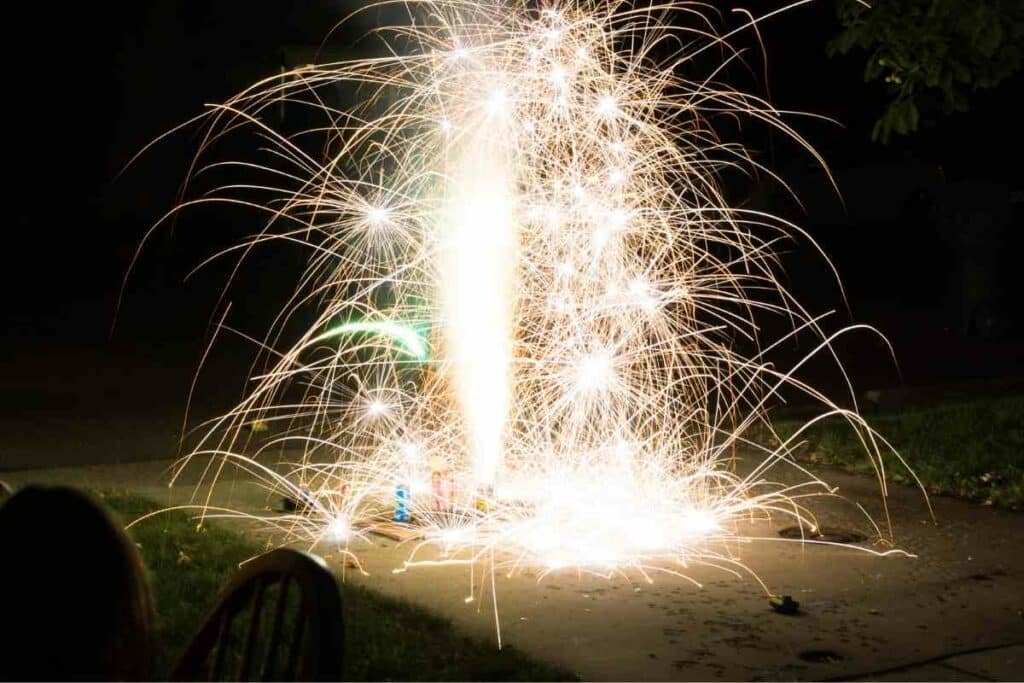
They can be particularly intimidating to the elderly and frighten children.
The unwanted noise may land you with a visit from local law enforcement, especially if you use fireworks at unseasonable times.
Risk to nearby pedestrians/ road users
A small garden may not provide adequate clearance for ignited rockets and they may have a trajectory that brings them into the path of oncoming traffic or pedestrians.
Harm to animals
Animals and fireworks are never a great combination and again the proximity of letting off your fireworks in a small garden may frighten or injure pets and wildlife.
How big does my backyard need to be to use outdoor fireworks?
If you’re of age, you can buy and handle common outdoor fireworks including rockets, fountains, and cakes, but the minimum space required to let these explosive devices off safely is often overlooked.
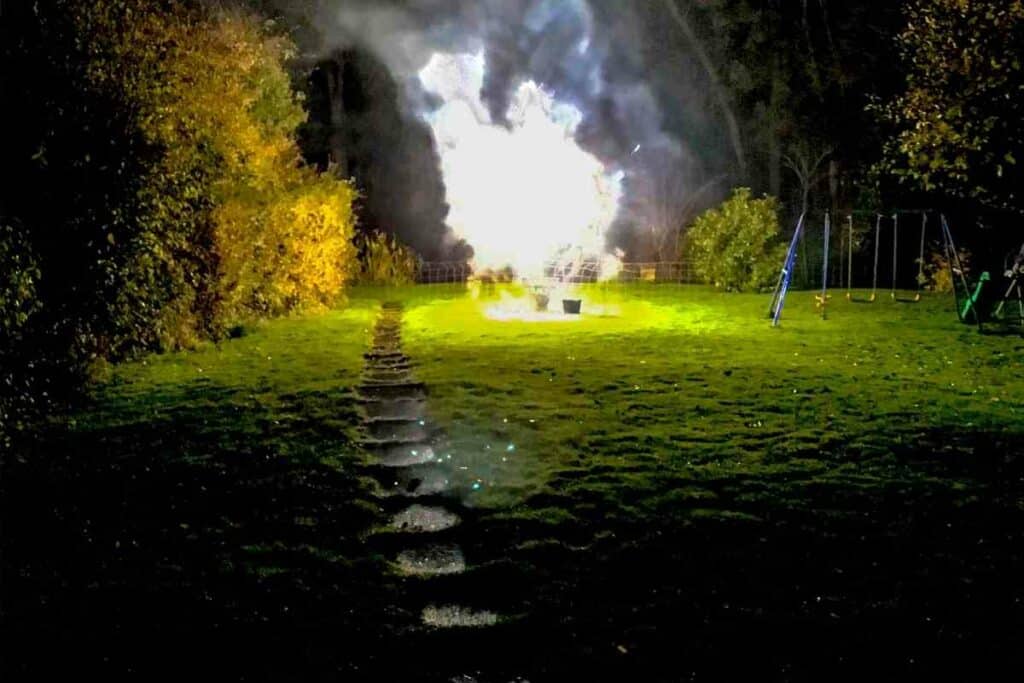
At a minimum, and depending on the specific type and specification of firework you choose, you’ll typically need a distance of between 8 and 15 meters between the fireworks and anyone watching.
If the fireworks manufacturer specifies a longer distance, use it.
A distance of 8 meters is an absolute minimum and applies to consumer or garden fireworks only.
Use the maximum distance available in your garden to keep as far away from fireworks as possible.
Only use consumer or garden-rated fireworks in your small back garden
If your small garden has adequate space to host a fireworks display safely, you need to ensure that you obtain the correct class of fireworks that is suitable for consumer handling and garden use.
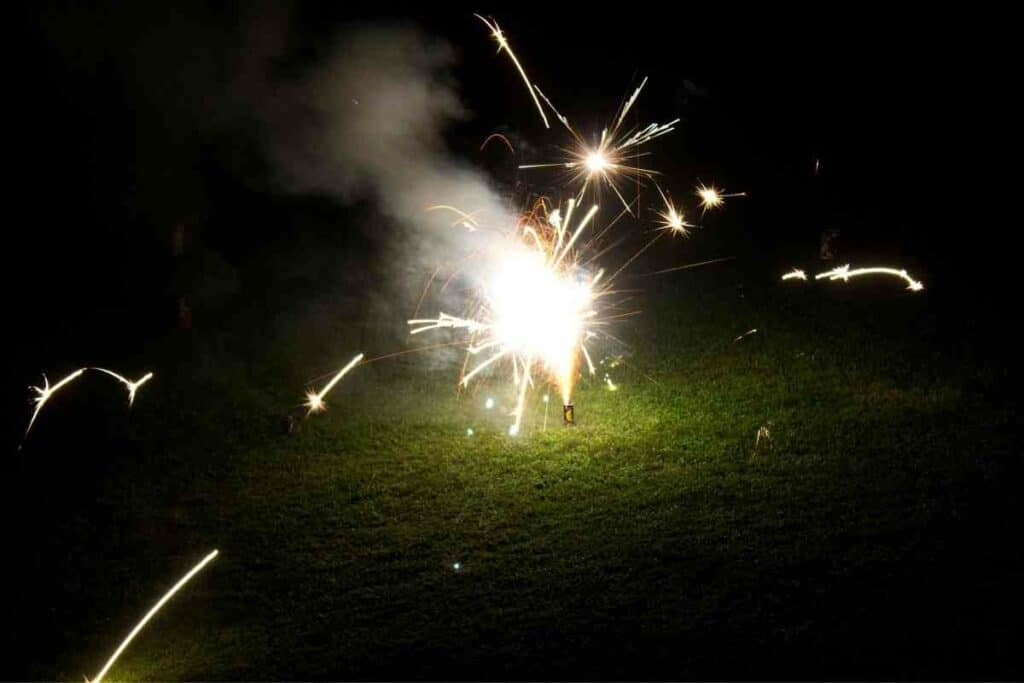
Fireworks classification varies at a state level but an updated Federal classification is available which can be used to select the correct fireworks for your garden.
This classification is from the United Nations Explosives shipping classification system and applies to all fireworks, right down to the ones you can buy for the 4th of July.
Look for class 1.4G fireworks for your garden
Class 1.4G (UN0336) are known as common or consumer fireworks and denote pyrotechnics (fireworks) with a minor explosion hazard that is confined to a package.
Related categories include Class 1.4S and other low-power explosives that include fuses and ignites.
This classification, previously known as Class B (Category 2 in the UK), covers most fireworks sold in the US and is distinct from the fireworks used for professional displays.
Examples of consumer fireworks
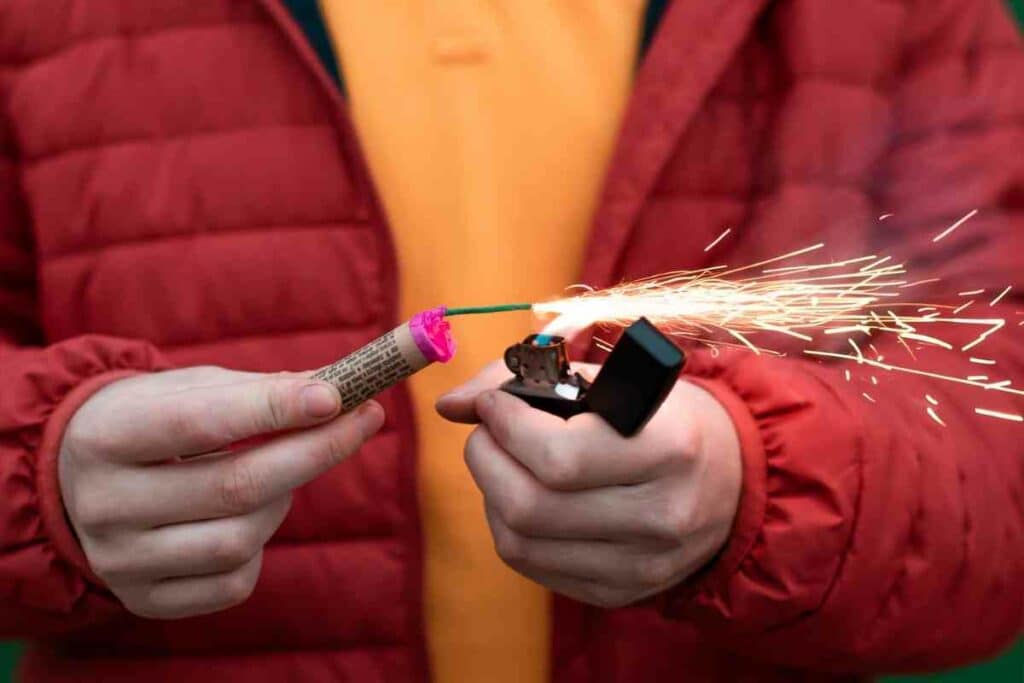
- Ground spinners, pinwheels, and helicopters
- Smoke and novelty items
- Bottle rockets
- Skyrockets and missiles
- Firecrackers (there are strict limits on the amount of explosives in the firecracker)
- Flares & fountains
- Roman candle
- Black snakes and strobes
- Cakes (multi-shot aerial devices)
- Sparklers
- Catherine wheel
Best fireworks for a small backyard
The best strategy for preparing fireworks for your small garden is to start with the least powerful options and work your way up bit by bit.
These fireworks are often low-noise meaning that you can enjoy them without causing a major disturbance in your neighborhood.
You can use these less-powerful fireworks can at an 8-meter distance confidently:
Sparklers
Sparklers are a great choice for light and sparkle in a small outdoor space.
These hand-held fireworks create exciting white or colored sparks as they slowly burn.
Children can hold sparklers with adult supervision.
Ice fountains
Ice fountains are a great choice for a tiny backyard or even balcony where they can be lit to produce sparkling flames and colors.
Most ice fountain sparklers are safe to use indoors or on a birthday cake.
Fountain fireworks
Fountain fireworks are a great low-noise option for a backyard firework display.
These are a great choice for young families or pets as they don’t make big bangs.
They are ground-based fireworks that erupt like a volcano when lit to produce a dramatic, colorful display with whistles and crackling.
Roman candles
Roman candles are classic firework that is ground-based.
Once lit, it will let off sparkling stars or exploding shells.
Everything goes straight up into the air reducing the risk of fire if your garden is very narrow.
The power of a Roman candle is determined by its diameter, with the largest diameter of Roman candles used in professional fireworks displays.
Catherine wheels
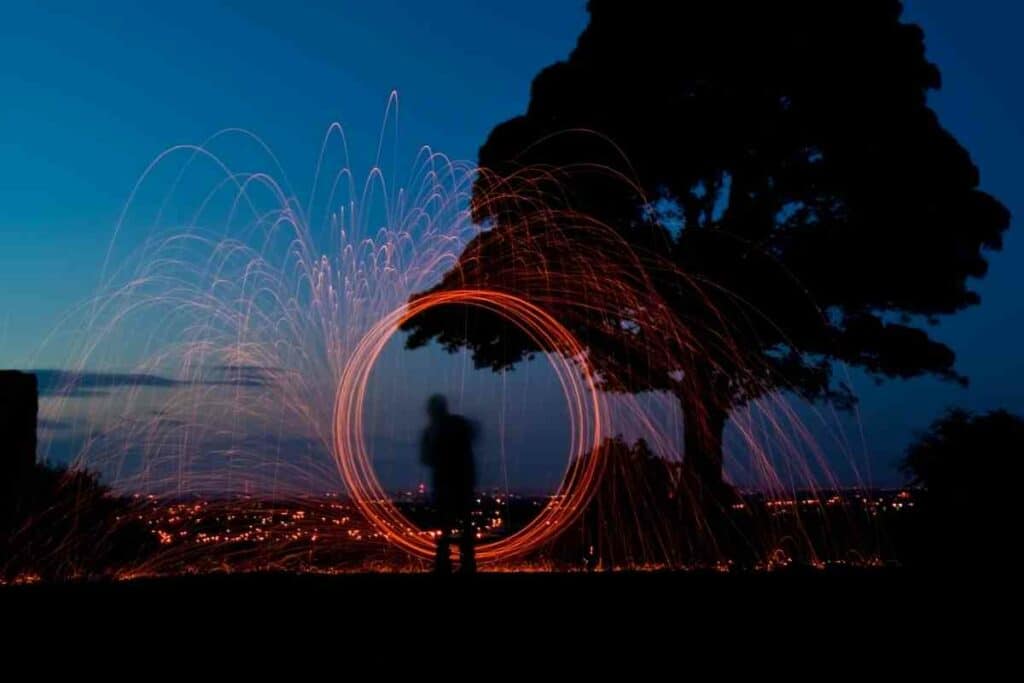
You usually fix these traditional spinning fireworks to a stake or other solid surface.
When lit, the Catherine wheel spins, releasing sparks and colored flames.
Strobing flares
This is another quiet firework that is perfect for smaller spaces.
They produce a vivid visual display with a vertical strobing effect that produces few stray sparks.
This flashing pulsing light is great to include in a fireworks display as it really holds the attention.
Barrages or firework cakes
Firework cakes and barrages are often too powerful for a small garden but there are some barrages that are specifically designed for 8-meter distances.
Many fireworks retailers have barrages you can use in a garden with an 8-meter clearance.
Firework cakes provide a significant upgrade in noise, light, and drama. If you want a big bang, look for a compound cake that contains multiple pre-fused cakes.
Manufacturers usually glue these to a wooden board and once lit, they consecutively explode, filling your sky with a spectacular display.
Last-minute tips for setting off fireworks in a small backyard
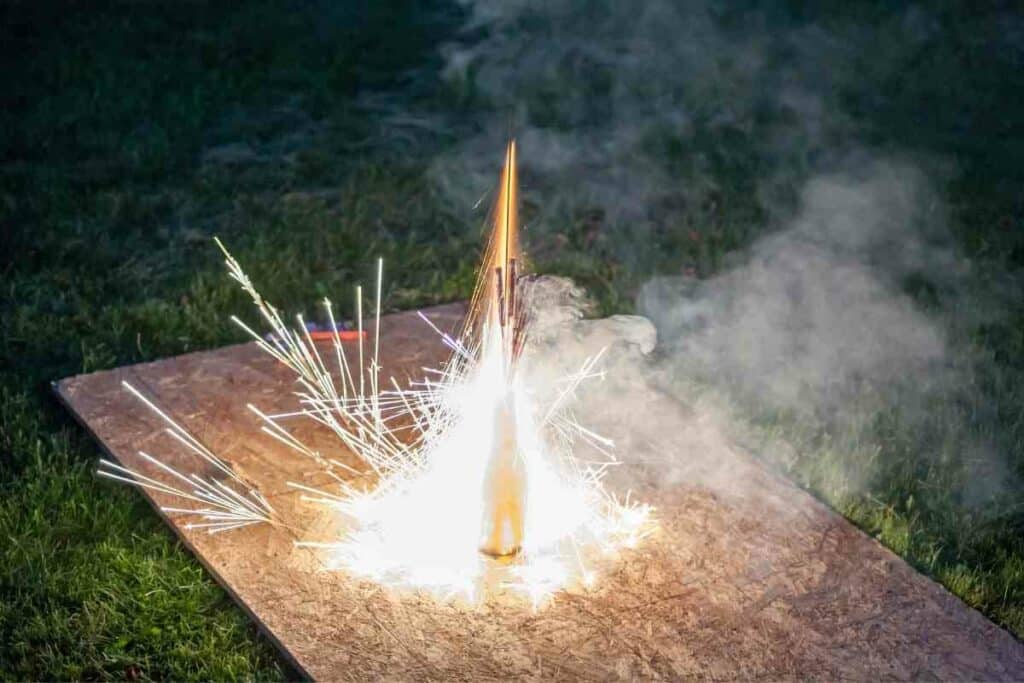
- Check local and state regulations on the use of fireworks to ensure you are complying with the law.
- Always source your fireworks from a reputable manufacturer or retailer.
- Have water and ideally a garden hose on hand. A bucket of water is ideal for extinguishing sparklers.
- Only one person should ignite the fireworks in your garden, lighting one firework at a time.
- If you light a firework and it does not ignite, do not return to it or try to relight it. Douse it with the hose from a distance.
- Prepare your fireworks display away from homes, dried vegetation, and trees.
- Don’t use glass containers to support anchor fireworks. Shattered glass or ceramic as a firework explodes can produce lethal shrapnel.
- Never hold a firework to light it. Always secure them first.
- Supervise children carefully around fireworks and don’t let them handle fireworks.
- Keep pets and very young children indoors.
- Do not try to modify fireworks or make your own.
- Once fireworks are spent, hose them down before disposing of them.
Rounding up
Though you have to be careful when using fireworks in a small garden, there are still plenty of options that will amaze your family and friends.
Remember that with a smaller and more compact space, you will need to ensure you have a clear safety route to escape once you have lit the fireworks.
They also need to be secured before lighting, in line with the manufacturer’s instructions.


